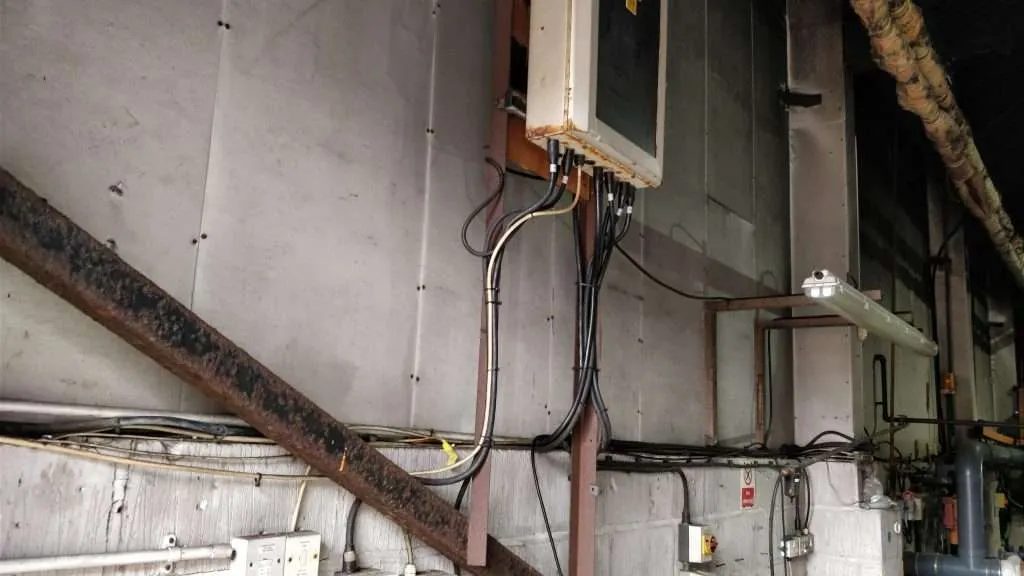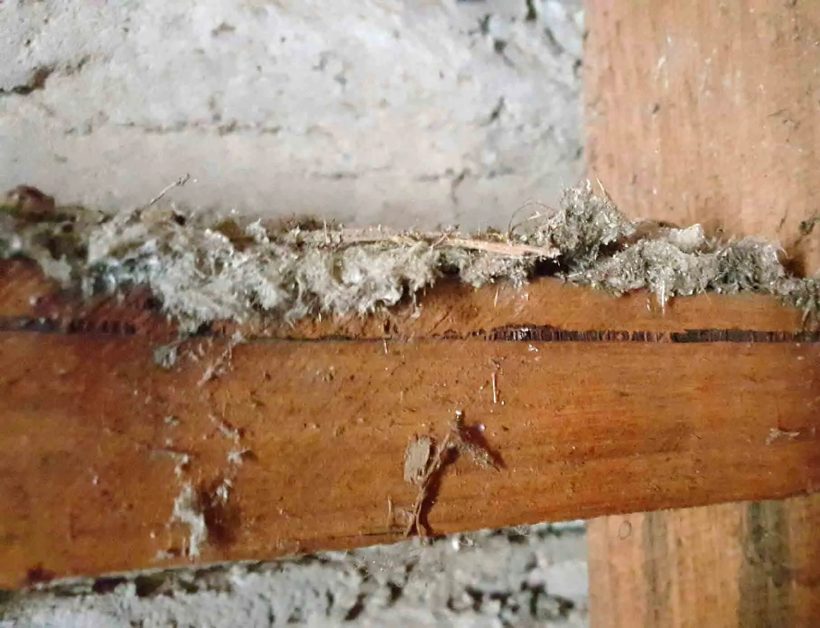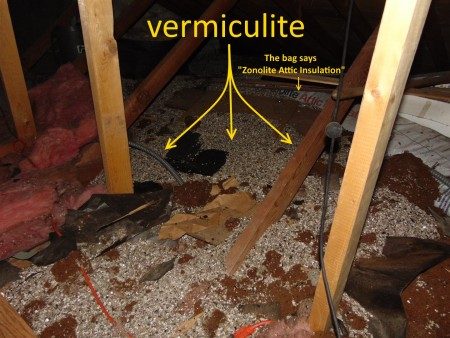What Does Asbestos Wire Insulation Look Like?

My article below will cover what asbestos wire insulation wire looks like and helpful tips.
Asbestos wire insulation was a popular choice for insulating electrical wires during the 20th century but was discontinued due to multiple health and safety issues.
Unfortunately, visual inspection alone is insufficient to identify asbestos wire insulation. Asbestos fibers are too tiny, and they don’t have an odor. You would need to know what type of wire it is, when it was installed, and where it was used to make an educated guess of the likelihood that the insulation contains asbestos. An asbestos test will confirm whether it is present or not.
I will show you what to look for, but first, a brief background to know why identifying asbestos wire insulation is so important.
Brief Background
Use of Asbestos
Asbestos was widely used for electrical wire insulation in North America from around 1920 up to 1988. It was used because of its useful properties of heat and fire resistance, electrical and acoustic insulation, general durability, high tensile strength, and acid resistance. When used primarily for general electrical wire insulation in some residential homes, the form with low iron content was common. Otherwise, it was mostly used in places exposed to high temperatures.
Concerns over the use of asbestos were first raised legally in the Toxic Substances Control Act of 1976 and the Asbestos Hazard Emergency Response Act of 1987. Although the U.S. Environmental Protection Agency tried to ban most asbestos products in 1989, and asbestos mining within the U.S. ceased in 2002, it is still imported into the country.
Risks of Asbestos Insulation
Asbestos wire insulation poses health risks, especially when the wiring is degraded or damaged and if located in a busy part of the home. Continuous exposure to airborne particles of asbestos fibers can accumulate in lung tissue and cause various diseases, including lung cancer, asbestosis, and mesothelioma. Often, the symptoms don’t show until many years later.
Asbestos is now recognized as a carcinogen, so electricians don’t use it anymore and seek to either remove it or replace it. If you move into an old home, you must check for possible asbestos wire insulation.
How to Identify Asbestos-Insulated Wiring
To help identify asbestos-insulated wiring, ask yourself four questions:
- What condition is the wire in?
- What type of wire is it?
- When was the wiring installed?
- Where is the wiring?
What Condition is the Wire in?
If the wire you suspect may have asbestos insulation in damaged condition, you should replace it anyway. It should be removed even if it is not in use but in an area occupied by people. Look for signs of cuts, weathering, cracking, etc. If the insulation crumbles or pulverizes easily, it could be hazardous whether it contains asbestos or not.
What Type of Wire is it?
The type of wiring may give a clue whether its insulation contains asbestos. Asbestos-insulated wire exists in several types (see the table).
| Category | Type | Description (Wire with…) |
| Asbestos-insulated wire (classified as 460-12) | A | asbestos insulation |
| AA | asbestos insulation and asbestos braid | |
| AI | asbestos insulation impregnated | |
| AIA | asbestos insulation impregnated and asbestos braid | |
| Asbestos-varnished cloth wire (classified as 460-13) | AVA | asbestos insulation impregnated with varnished cloth and asbestos braid |
| AVB | asbestos insulation impregnated with varnished cloth and flame-retardant cotton braid | |
| AVL | asbestos insulation impregnated with varnished cloth and lead covering | |
| Other | AF | asbestos-covered heat-resistant fixture wire |
| AVC | asbestos insulation interlocked with armored cable |
The type of wiring insulation of the most concern was called vermiculite, sold under the brand name Zonolite. Vermiculite is a naturally occurring mineral compound, but the main source from which it was obtained (a mine in Montana) made it contaminated. It looks like mica and is composed of silvery flakes.

If you find this type of wire insulation in your home, you should call a professional to have it inspected. Other asbestos-containing wire insulation brands included Gold Bond, Hi-Temp, Hy-Temp, and Super 66.
One variety of asbestos wire insulation was a spray-on form, which created toxic fiber clouds in the air. It was only relatively safer if the insulation was properly encapsulated after spraying. Present regulations generally allow no more than 1% asbestos in spray-on insulation and a binder of bitumen or resin.
When Was the Wiring Installed?
The wiring in your home was probably installed when the house was first constructed. Besides ascertaining this, you need to know when asbestos wire insulation was first used in your area or country and when its use was stopped. When did your local or national legislation ban the use of asbestos wire insulation?
Generally, for the U.S., this means between 1920 and 1988. Homes built after this year might still contain asbestos, but if yours was constructed before 1990, particularly during 1930-1950, the chances of asbestos wire insulation are high. In Europe, the cut-off year was around 2000, and globally, asbestos wire insulation is still being used despite the WHO calling for a ban since 2005.
Where is the Wiring?
The heat-resistant properties of asbestos-insulated wiring made it ideal for areas exposed to intense heat. Therefore, the chances of asbestos wire insulation are high if the appliance is, for example, an old iron, a toaster, a stove igniter, or a light fixture, or if the wiring is otherwise near a heat-generating appliance, such as an electric heater or boiler.
However, asbestos wire insulation of the ‘loose-fill’ type was also commonly used in other places like attics, inside walls, and other hollow spaces. It had a fluffy texture. If you suspect asbestos wire insulation in your attic, you should keep away from it, not store things there, and call a professional to have the asbestos removed.

An easier-to-identify type of asbestos insulation was in the form of boards or blocks glued to walls to conceal wiring. They are pure asbestos and very dangerous, especially if you see them chipped or cut. Asbestos insulation boards behind wiring can be difficult to remove.
The Asbestos Test
You may suspect a wire is insulated with asbestos, but an asbestos test would be necessary to confirm it. This involves taking safety precautions for potentially toxic hazards and drilling or cutting to take a sample away for microscopic testing. Since this is not something a typical homeowner can do, you must call a professional in asbestos removal. Depending on the situation, encapsulation of the asbestos wire insulation might be recommended instead of complete removal.
References
Website References:
